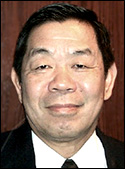Nov 17, 2004Applied Wireless Identification Group, an RFID reader maker based in Monsey, N.Y., has closed a $10 million round of funding. The company, which has been profitable for the past three years, will use the money to expand its research and development department, bolster its marketing and open European and Asian offices.
"This infusion of working capital will amplify our already strong financial performance," says Donny Lee, AWID's CEO.
AWID was founded in 1997 to make RFID readers for the access control market. The company began expanding aggressively into supply chain and asset management applications in 2000. It has developed multifrequency, multiprotocol readers that are being used by Hewlett-Packard and other customers.
Lee says AWID has developed a number of reader innovations and decided to raise additional funding in order to be able to continue to compete in the rapidly evolving market for UHF RFID readers. The company plans to hire more engineers and develop new chipsets that will enable it to shrink the electronics in its readers down to the two or three microchips.
AWID will also use the funding to enhance features in its existing reader line, including something called "Fast Look Ahead Overload Compensation." When a reader sends out radio waves to power up a passive tags, those waves continue to interfere with the signal being reflected back from that tag until they fade out. AWID readers use a type of noise cancellation to factor out the reader emissions so the waves reflected back from the tag can be read almost immediately.
The reader is made more sensitive because it can now better detect the waves coming back from the tags. If you imagine the waves emitted by the reader as a strong wind at your back and the information from the tag as a weak echo you are trying to hear, by stopping the wind as soon as you shout, you have a better ability to hear the echo.
"By maximizing the sensitivity of the reader immediately after it stops broadcasting, we are able to read more tags more quickly," he says. Lee says this feature enables AWID readers to perform well when there are many tags in the read field, especially if there are tags using different protocols. The reader can quickly send out signals using different protocols to see what types of tags are present.
Another goal is to use the money to step up the company's marketing efforts—it has been relatively low-key—and enhance customer support. As part of that effort, the company plans to open offices in Asia and Europe.
"The working capital gives us the opportunity to hire the people we need to meet the demands of our customers," says Jeffrey Jacobsen, president of AWID. "The user community has limited experience with RFID. What we want to do is augment the capabilities of our partners—the systems integrators and software companies—so we can support the people on the front lines who install our equipment."
The new round of funding, AWID's second, was lead by Yuen Foong Yu Paper Manufacturing Co. of Taiwan, one of the world's largest consumer packaging companies. Other participants include EMMT Systems, Microelectronics Technology, Hau Nan Commercial Bank and Sunsino Venture Capital.


